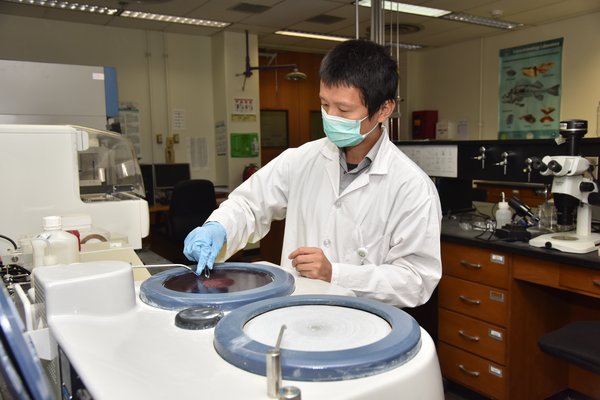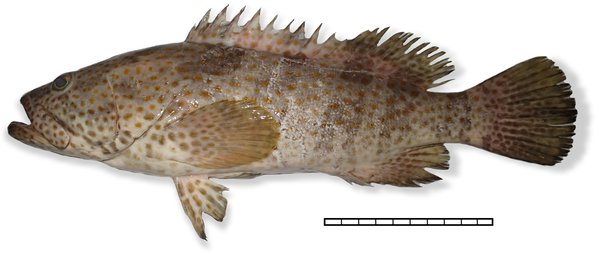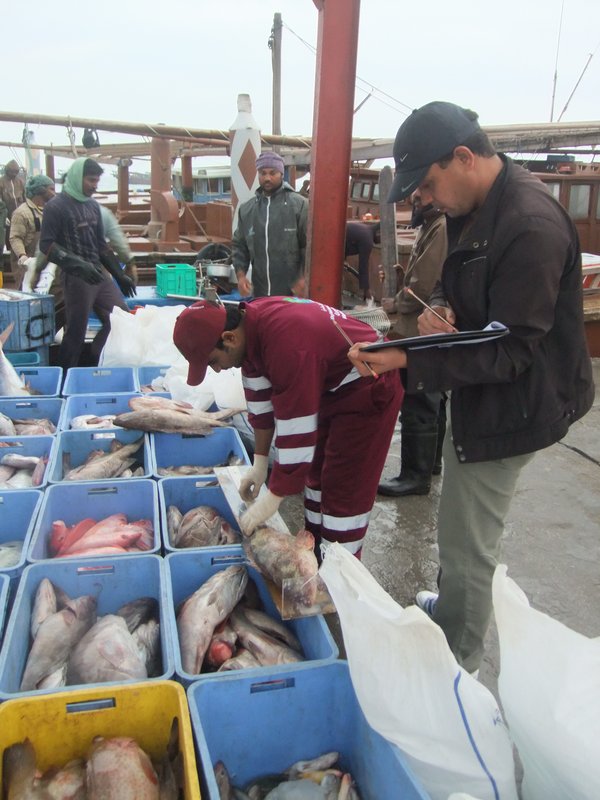A research team reveals differences in the life cycle of grouper fish between Saudi and Emirati waters
Dec. 6, 2020 | ResearchDr. Lynn: Research helps to create strategic management for the sustainable exploitation of grouper fish.
The orange-spotted grouper, Epinephelus coioides, is one of the most important commercially exploited fish species in the Arabian Gulf and one of the most expensive fish on the market.
A research team from the Center for Environment and Water, led by Dr. Lin, Y.J, released a study about the life history traits of the Hamoor Epinephelus coioides.
The team found remarkable differences between orange-spotted groupers living in Saudi waters and those living in Emirati waters with respect to life-cycle features and the way they reproduce.
The research aims to identify and define areas with high productivity, so this information can be used by participating countries to help them make better decisions.

Biological studies that aimed at establishing the basic biological knowledge necessary for determining the sustainable exploitation of the species are few and have a limited spatial extent. Although most of the research projects are related to oil and gas facilities, a lot of environmental research has been undertaken to preserve the environment and promote sustainable development in the Kingdom.
This project mainly specializes in the grouper fish, as the marine biology team focuses on the biological aspect of the environment. And it is one of 50 projects supported by Saudi Aramco through a partnership extending over the past 50 years.

Dr. Lynn said that the research team conducted a comparative analysis of life-history traits of this sequential hermaphrodite, and of trends of abundance in coral reefs in Saudi waters versus Emirati waters in the Arabian Gulf.
He said: “We found remarkable differences in sex proportion by length and age, rates of somatic growth, size at maturity, and production of gonadic biomass. However, there are no differences in the age composition, mode of growth, timing and duration of spawning, natural mortality rate, and trends of abundance.”
He explained that it was observed in Saudi Arabian waters in the Gulf that the reproductive strategies could be diandric protogyny or protandric because males disappear at a later age and higher size. However, in the Emirati waters, the strategy is protogyny, with a full predominance of females in early life and full predominance of males in late life.
In Saudi waters, the orange-spotted grouper can exhibit a bidirectional sex-change. He added.
The team director stated that in biology, it is important to know lifecycle of the fish in order to study them. He stated that in a specific bone segment in the fish's ear, there are rings, and by using a simple operation, the age of the fish can be determined by counting the rings.
In summer, the fish grow quickly, and in winter, they grow less, creating transparent rings that reveal their age.

With respect to the challenges and difficulties faced by the research team, Dr. Lin pointed out that data gathering and sampling were difficult. He said: “Our team had to collect samples at four o'clock in the morning when the fishermen returned from the sea, then rush to another location several hours away to obtain other samples, and this was repeated twice a week for 15 months.”

He added: “We suggest that fisheries policies should be versatile, consisting of regional-wide as well as local management measures, to account for local differences and regional-wide commonalities in life-history traits and trends of abundance.” These differences need to be considered to form effective strategic management that maintains its sustainability.
The research was carried out in cooperation with the Ministry of Environment, Water, and Agriculture to ensure sustainable fishing. This study is important to determine the stock of grouper, so it can be used by the Ministry to adjust the stock management strategies, fishing methods, and the size of the fish.

Dr. Lin Y J is one of the foremost research scientists at the Center for Environment and Water. He joined the Research Institute at King Fahd University of Petroleum & Minerals in 2012 and has published 28 articles in the indexed scientific journals SCI. His experience includes fish life history, biology, fisheries assessment, and statistics.



